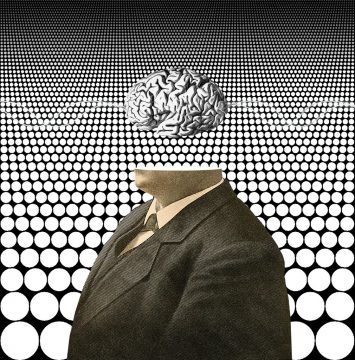Charles Yu in The New York Times:
Straw poll: Who thinks we’re living in the Matrix?
 On the one hand, are we really to believe a single human is responsible for the body of work — entertaining, brilliant, immense — that Neal Stephenson has produced over the past quarter-century? Turning out thousand-page novels every couple of years? It seems much more likely that a computer is behind all of this. On the other hand, have you read Neal Stephenson? His mind is capable of going places no one else has ever imagined, let alone rendered in photorealist prose. And he doesn’t just go to those places; he takes us with him. The very fact of Stephenson’s existence might be the best argument we have against the simulation hypothesis. His latest, “Fall; or, Dodge in Hell,” is another piece of evidence in the anti-Matrix case: a staggering feat of imagination, intelligence and stamina. For long stretches, at least. Between those long stretches, there are sections that, while never uninteresting, are somewhat less successful. To expect any different, especially in a work of this length, would be to hold it to an impossible standard. Somewhere in this 900-page book is a 600-page book. One that has the same story, but weighs less. Without those 300 pages, though, it wouldn’t be Neal Stephenson. It’s not possible to separate the essential from the decorative. Nor would we want that, even if it were were. Not only do his fans not mind the extra — it’s what we came for.
On the one hand, are we really to believe a single human is responsible for the body of work — entertaining, brilliant, immense — that Neal Stephenson has produced over the past quarter-century? Turning out thousand-page novels every couple of years? It seems much more likely that a computer is behind all of this. On the other hand, have you read Neal Stephenson? His mind is capable of going places no one else has ever imagined, let alone rendered in photorealist prose. And he doesn’t just go to those places; he takes us with him. The very fact of Stephenson’s existence might be the best argument we have against the simulation hypothesis. His latest, “Fall; or, Dodge in Hell,” is another piece of evidence in the anti-Matrix case: a staggering feat of imagination, intelligence and stamina. For long stretches, at least. Between those long stretches, there are sections that, while never uninteresting, are somewhat less successful. To expect any different, especially in a work of this length, would be to hold it to an impossible standard. Somewhere in this 900-page book is a 600-page book. One that has the same story, but weighs less. Without those 300 pages, though, it wouldn’t be Neal Stephenson. It’s not possible to separate the essential from the decorative. Nor would we want that, even if it were were. Not only do his fans not mind the extra — it’s what we came for.
In this particular case, the extra stuff is also kind of the point. The mind-melting density of detail in Stephenson’s work can sometimes overwhelm or bog down the narrative, but in “Fall” it is very much in service of the book’s subject: reality, and how it might one day be simulated. How those simulations could be iterated and upgraded over time, through technological progress and at great financial cost, to an arbitrary degree of verisimilitude. How the resources of our “Meatspace” civilization would increasingly become inputs and raw material for the creation and improvement of a digital civilization (“Bitworld”), gradually sucking all of humanity into the Matrix in the process. Exploring the implications and possibilities of this, on a grand and granular scale, plays to Stephenson’s strengths. This is a case of author and substance and story and style all lining up; a series of lenses perfectly arranged to focus the power and precision of Stephenson’s laser-beam intellect.
More here.
